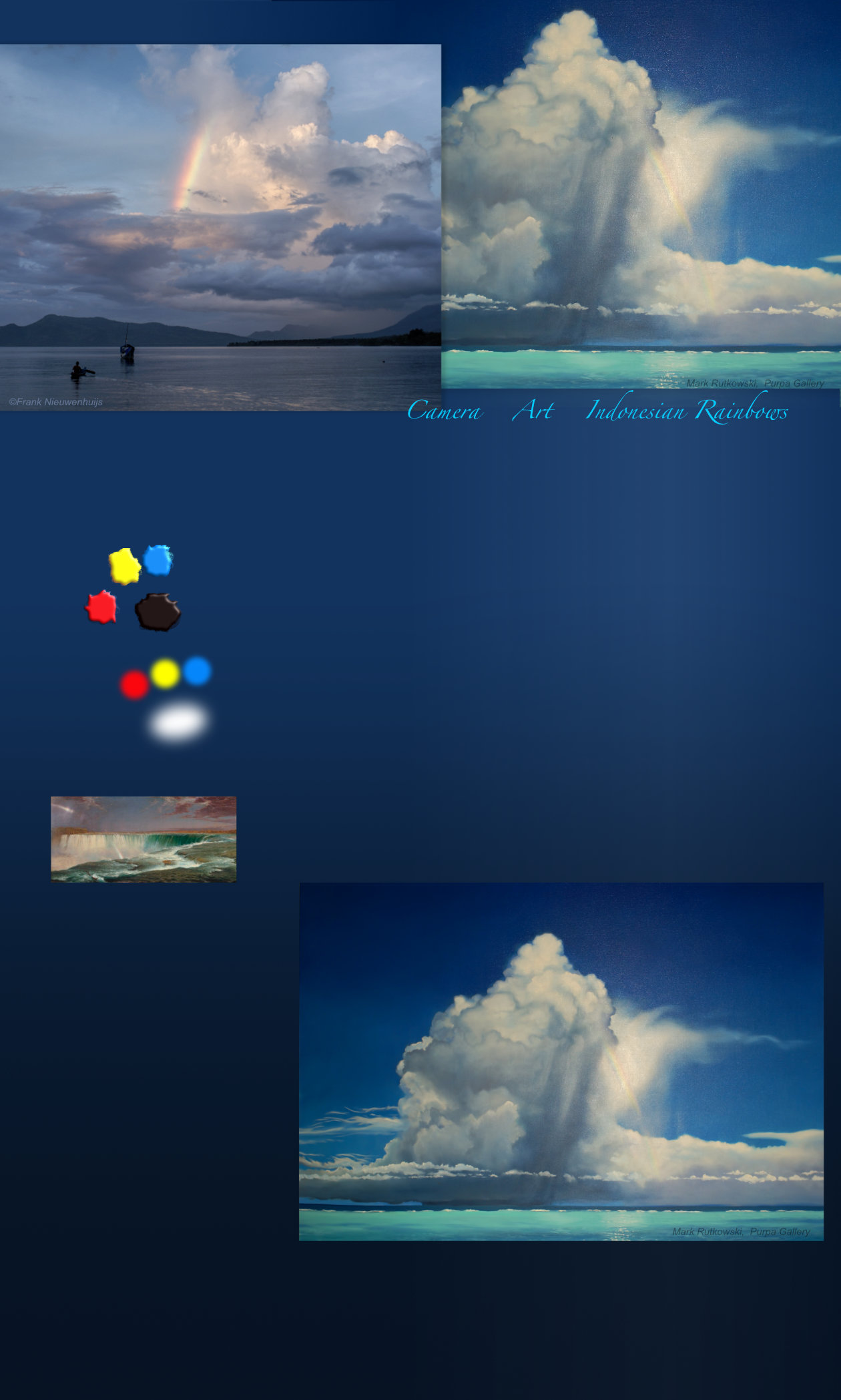


Tropical Cumulonimbus
Both photo and painting portray grouped towering cumulonimbus clouds, some with characteristic anvil tops.
The artist’s horizon is blackened by rain pouring from the cloud’s base. Rain obscures some distant hills in Franks image. If the images were videos the clouds might flicker with lightning.
Tropical cumulonimbus clouds are one of the drivers of global atmospheric circulation by transferring heat and moisture from the tropics. Intense ground heat warms low-level moist air causing it to bubble upwards in powerful updrafts, as it expands it cools and water droplets condense. Eventually the cloud top reaches equilibrium where high altitude winds form the anvil.
The top is some 12km high at the tropopause and some clouds actually punch through into the stratosphere. Individual cumulonimbus cells can organise into larger mesoscale convective systems.
Frank Nieuwenhuijs photographed this rainbow against a dramatic sky at Desa Wairterang on the�north coast of East Flores, Indonesia. Just a few days later he was browsing the Purpa Fine Art Gallery Seminyak on Bali. He was astonished by the painting at right by artist Mark Rutkowski. It could almost be a mirror image of the same spectacular scene. Enormous tropical cumulonimbus dominates both.